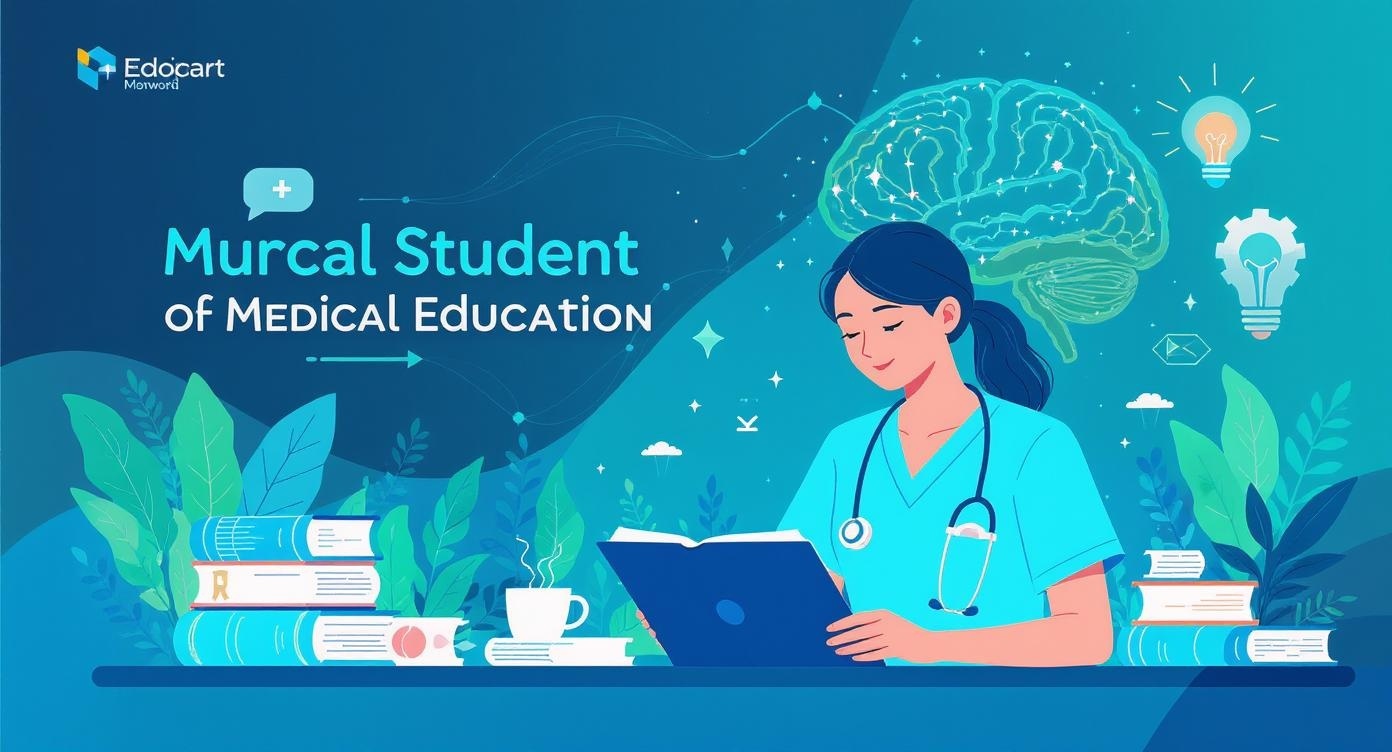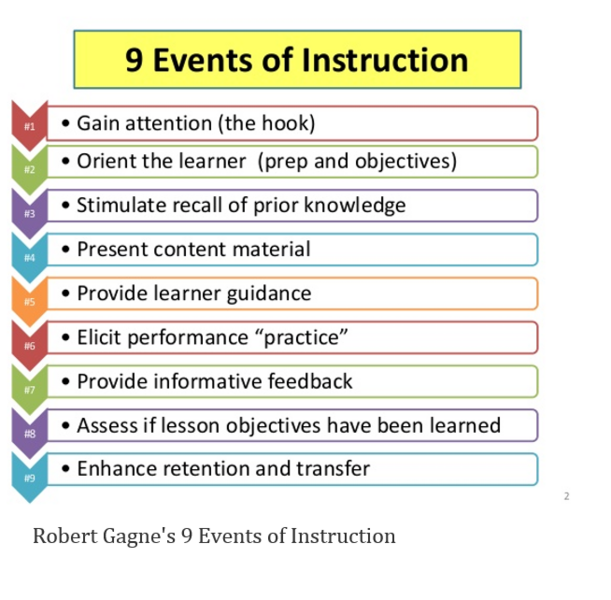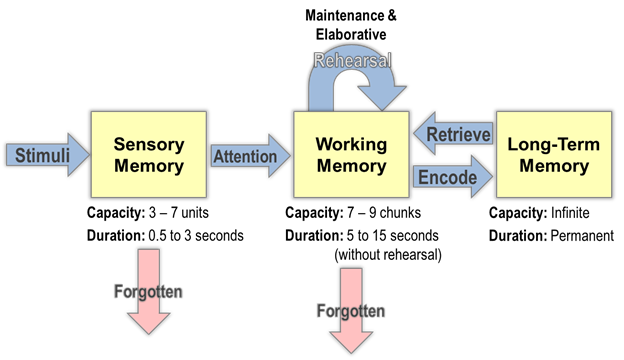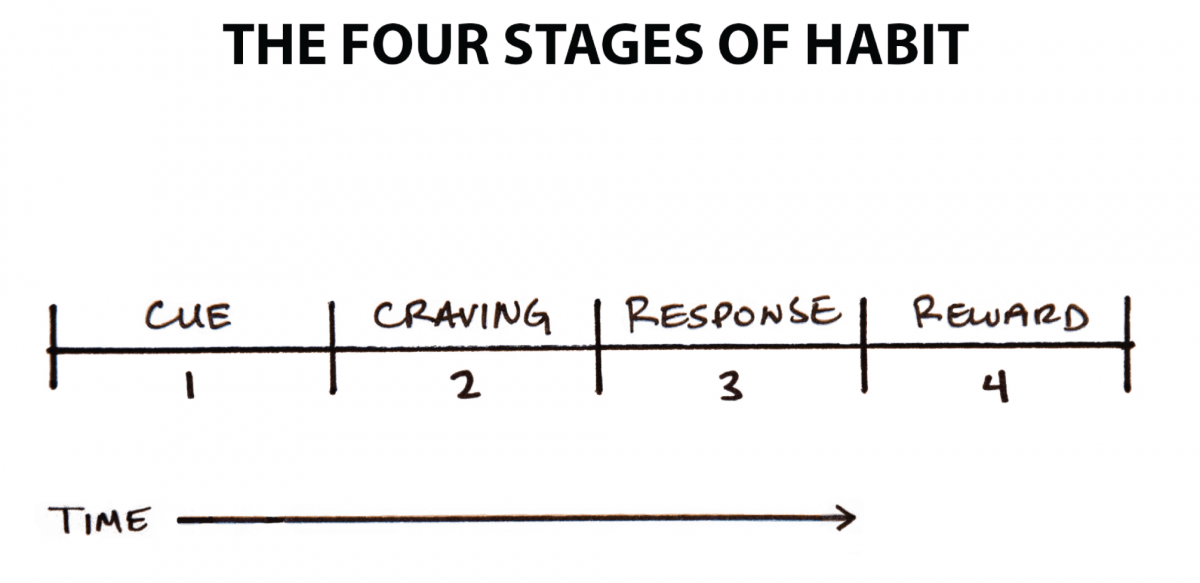
Learning in Nursing Practice
Comprehensive Study Guide for Nursing Students
Table of Contents
Introduction
Learning is the cornerstone of nursing practice, enabling healthcare professionals to acquire, adapt, and apply knowledge throughout their careers. This comprehensive guide explores the fundamental principles of learning theory, practical applications in nursing education, and strategies for developing effective learning habits that enhance patient care quality and professional development.
1. Definition of Learning
What is Learning?
Learning is a relatively permanent change in behavior or knowledge that occurs as a result of experience, practice, or study. It involves the acquisition, processing, retention, and application of information or skills.
Key Characteristics
- Permanent: Long-lasting behavioral changes
- Experience-based: Results from interaction with environment
- Adaptive: Helps individuals adjust to new situations
- Progressive: Builds upon previous knowledge
Learning vs. Performance
- Learning: Internal process of knowledge acquisition
- Performance: Observable demonstration of learning
- Distinction: Learning can occur without immediate performance
- Assessment: Performance indicates but doesn’t equal learning
Memory Aid: PACE
- Permanent change in behavior
- Acquired through experience
- Cognitive processing involved
- Enables adaptation to environment
Nursing Application: Definition
In nursing practice, learning encompasses the continuous acquisition of clinical skills, evidence-based knowledge, and professional competencies. For example, when a nursing student learns to perform wound care, they must:
- Acquire theoretical knowledge about wound healing physiology
- Practice hands-on skills in sterile technique
- Develop critical thinking for wound assessment
- Apply knowledge to diverse patient scenarios
2. Types of Learning
:max_bytes(150000):strip_icc()/2794861-classical-vs-operant-conditioning-5afc42a343a10300370da76f.png)
Classical vs. Operant Conditioning – Fundamental Learning Types
2.1 Classical Conditioning (Pavlovian Learning)
Classical conditioning involves learning through association between stimuli. A neutral stimulus becomes capable of eliciting a response when paired repeatedly with an unconditioned stimulus.
| Component | Definition | Nursing Example |
|---|---|---|
| Unconditioned Stimulus (UCS) | Naturally triggers a response | Pain from injection |
| Unconditioned Response (UCR) | Natural response to UCS | Fear/anxiety from pain |
| Conditioned Stimulus (CS) | Previously neutral stimulus | Sight of needle/syringe |
| Conditioned Response (CR) | Learned response to CS | Fear/anxiety at sight of needle |
2.2 Operant Conditioning (Instrumental Learning)
Operant conditioning involves learning through consequences of behavior. Behaviors followed by favorable outcomes increase in frequency, while those followed by unfavorable outcomes decrease.
Reinforcement
- Positive: Adding pleasant stimulus (praise for good performance)
- Negative: Removing unpleasant stimulus (ending alarm after correct action)
Punishment
- Positive: Adding unpleasant stimulus (extra work for poor performance)
- Negative: Removing pleasant stimulus (loss of privileges)

The Four Stages of Learning – From Unconscious Incompetence to Unconscious Competence
2.3 Cognitive Learning
Cognitive learning emphasizes mental processes including thinking, memory, perception, and problem-solving. It focuses on how information is processed, stored, and retrieved.
Observational Learning
Learning through watching others
Insight Learning
Sudden understanding of problem solution
Problem-Based Learning
Learning through solving real problems
2.4 Social Learning Theory
Social learning theory combines behavioral and cognitive approaches, emphasizing learning through observation, imitation, and social interaction.
Attention
Focus on model’s behavior
Retention
Remember observed behavior
Reproduction
Perform the behavior
Motivation
Incentive to continue
Memory Aid: COCS
- Classical conditioning – learning through association
- Operant conditioning – learning through consequences
- Cognitive learning – learning through thinking
- Social learning – learning through observation
Nursing Application: Types of Learning
Clinical Examples:
- Classical: Patient anxiety before procedures
- Operant: Positive feedback improving performance
- Cognitive: Understanding medication mechanisms
- Social: Learning from experienced nurses
Teaching Strategies:
- Use positive reinforcement for skill mastery
- Provide role models and mentorship
- Create problem-solving scenarios
- Encourage reflective practice
3. Factors Influencing Learning

Psychological Process of Learning – Multiple Factors Interaction
3.1 Internal Factors
Cognitive Factors
- Intelligence: General cognitive ability
- Prior Knowledge: Existing knowledge base
- Learning Style: Preferred learning approach
- Memory Capacity: Ability to store and recall
- Attention Span: Focus and concentration ability
Emotional Factors
- Motivation: Drive to learn and achieve
- Anxiety Level: Stress and nervousness
- Self-Efficacy: Belief in own abilities
- Interest: Personal engagement with content
- Attitude: Disposition toward learning
Physical Factors
Rest & Sleep
Adequate sleep for memory consolidation
Nutrition
Proper nutrition for brain function
Health Status
Physical wellness affects cognition
3.2 External Factors
Environmental Factors
- Physical Environment: Lighting, temperature, noise
- Learning Resources: Available materials and tools
- Technology Access: Digital learning platforms
- Space Design: Layout conducive to learning
Social Factors
- Peer Support: Classmate interactions and study groups
- Cultural Background: Values and learning traditions
- Family Support: Home environment and encouragement
- Instructor Quality: Teaching effectiveness and rapport
3.3 Instructional Factors
| Factor | Description | Impact on Learning | Nursing Example |
|---|---|---|---|
| Content Organization | Logical sequencing of material | Facilitates understanding and retention | Basic anatomy before pathophysiology |
| Teaching Methods | Variety of instructional approaches | Accommodates different learning styles | Simulation, case studies, lectures |
| Feedback Quality | Timely, specific, constructive guidance | Enhances performance and motivation | Clinical instructor guidance during procedures |
| Practice Opportunities | Hands-on application of knowledge | Builds competence and confidence | Skills lab practice before patient care |
Key Point: Interaction of Factors
Learning effectiveness results from the complex interaction of multiple factors. A deficit in one area can often be compensated by strengths in others. For example, high motivation can overcome some learning difficulties, while poor environmental conditions can hinder even highly motivated learners.
Memory Aid: SHAPES Learning
- Social support and environment
- Health and physical condition
- Attitude and motivation
- Prior knowledge and experience
- Emotional state and anxiety level
- Steaching strategies and instruction quality
Nursing Application: Learning Factors
Patient Education Considerations:
- Assess patient’s health literacy level and cultural background
- Consider physical limitations (vision, hearing, dexterity)
- Evaluate emotional readiness and anxiety levels
- Adapt teaching methods to patient preferences
- Provide supportive, non-judgmental environment
Student Nurse Development:
- Create optimal clinical learning environments
- Provide graduated complexity in patient assignments
- Offer regular, constructive feedback
- Support stress management and self-care
- Encourage peer collaboration and mentorship
4. Learning Process

Information Processing Model – How Learning Occurs
4.1 Information Processing Model
Sensory Input
Information enters through senses
Selective Attention
Focus on relevant information
Working Memory
Temporary processing and manipulation
Long-term Memory
Permanent storage and retrieval
Sensory Memory
- Duration: 0.5-3 seconds
- Capacity: Large but rapidly fading
- Function: Initial information capture
- Types: Iconic (visual), Echoic (auditory)
Working Memory
- Duration: 15-30 seconds
- Capacity: 7±2 items (Miller’s Law)
- Function: Active processing and manipulation
- Components: Central executive, phonological loop, visuospatial sketchpad
Long-term Memory
- Duration: Potentially permanent
- Capacity: Virtually unlimited
- Function: Permanent storage and retrieval
- Types: Declarative (explicit), Procedural (implicit)
4.2 Stages of Learning Process
| Stage | Description | Characteristics | Nursing Example |
|---|---|---|---|
| Acquisition | Initial learning of new information | High attention, frequent errors, conscious effort | Learning proper hand hygiene technique |
| Fluency | Developing speed and accuracy | Reduced errors, increased confidence, smoother performance | Performing blood pressure measurements efficiently |
| Generalization | Applying skills to new situations | Transfer of learning, adaptation to contexts | Using communication skills with diverse patients |
| Adaptation | Modifying skills based on feedback | Flexibility, problem-solving, continuous improvement | Adjusting care plans based on patient responses |
4.3 Encoding Strategies
Elaborative Processing
- Connecting new information to existing knowledge
- Asking “why” and “how” questions
- Creating meaningful associations
- Developing personal examples and stories
Organizational Strategies
- Categorizing information into groups
- Creating concept maps and diagrams
- Hierarchical organization of concepts
- Sequential arrangement of procedures
4.4 Memory Consolidation
Memory consolidation is the process by which temporary, fragile memories are transformed into stable, long-term memories. This process involves:
Time-dependent Processes
- Synaptic consolidation (hours to days)
- Systems consolidation (weeks to years)
- Sleep-dependent memory consolidation
- Spaced repetition effects
Neural Mechanisms
- Protein synthesis for long-term potentiation
- Hippocampal-neocortical interactions
- Neurotransmitter system involvement
- Neural pathway strengthening
Clinical Learning Tip
In nursing education, the learning process is enhanced through simulation-based learning, which allows students to practice in safe environments before real patient encounters. This approach supports all stages of the learning process while building confidence and competence.
Memory Aid: SAFEGUARD Learning Process
- Sensory input – information enters
- Attention – selective focus
- Filtering – relevant information processing
- Encoding – organizing for storage
- Generalizing – applying to new situations
- Understanding – deep comprehension
- Adaptation – modifying based on feedback
- Retention – long-term memory storage
- Demonstration – performance and application
Nursing Application: Learning Process
Optimizing Clinical Learning:
- Provide clear learning objectives before clinical experiences
- Use reflective journaling to enhance memory consolidation
- Implement progressive complexity in skill development
- Encourage active questioning and critical thinking
- Support transfer of learning through diverse patient scenarios
Patient Education Process:
- Assess patient’s current knowledge and readiness to learn
- Present information in small, manageable chunks
- Use multiple modalities (visual, auditory, kinesthetic)
- Provide opportunities for practice and return demonstration
- Follow up to ensure retention and application
5. Habit Formation

The Four Stages of Habit Formation – From Cue to Reward
What is Habit Formation?
Habit formation is the process by which behaviors become automatic and unconscious through repetition and reinforcement. Habits are learned sequences of actions that are triggered by environmental cues and maintained by rewards.
5.1 The Habit Loop
%20Habit%20loop%20diagram.png?width=500&height=500&name=(EN)%20Habit%20loop%20diagram.png)
The Habit Loop – Cue, Routine, Reward Cycle
Cue (Trigger)
Environmental or internal signal that initiates the habit
Examples: Time of day, location, emotional state, preceding action
Routine (Behavior)
The actual behavior or action performed
Examples: Physical action, mental activity, emotional response
Reward (Benefit)
Positive outcome that reinforces the behavior
Examples: Physical pleasure, emotional satisfaction, social approval
5.2 Stages of Habit Formation
| Stage | Duration | Characteristics | Neural Activity | Nursing Example |
|---|---|---|---|---|
| Initiation | Days 1-7 | High consciousness, deliberate effort, frequent forgetting | High prefrontal cortex activity | Learning to always wash hands before patient contact |
| Development | Days 7-66 | Gradual automaticity, reduced effort, occasional lapses | Decreasing prefrontal activity | Automatically checking patient ID before medication |
| Stabilization | 66+ days | Automatic behavior, minimal conscious control | High basal ganglia activity | Instinctive vital signs assessment upon patient entry |
5.3 Types of Habits
Positive Habits
Behaviors that contribute to health, well-being, and professional development.
- Regular exercise and physical activity
- Consistent study and continuing education
- Proper sleep hygiene
- Mindfulness and stress management
- Evidence-based practice review
Negative Habits
Behaviors that hinder performance, health, or professional development.
- Procrastination and poor time management
- Skipping breaks or meals
- Excessive stress eating
- Negative self-talk and perfectionism
- Inconsistent documentation practices
5.4 Habit Change Strategies
Identify
Recognize current habit patterns
Target
Choose specific habit to change
Modify
Change cue, routine, or reward
Monitor
Track progress and adjust
Habit Change Techniques
Cue Modification:
- Environmental design and restructuring
- Remove triggers for negative habits
- Add prompts for positive habits
- Use visual reminders and cues
Routine Replacement:
- Substitute healthier behaviors
- Start with small, manageable changes
- Maintain same cue and reward
- Practice new routine consistently
5.5 Factors Affecting Habit Formation
Frequency
More frequent repetition accelerates habit formation
Reward Strength
Stronger rewards create more persistent habits
Consistency
Regular timing strengthens habit formation
Complexity
Simple behaviors become habits faster than complex ones
Key Point: Habit Stacking
Habit stacking involves linking a new habit to an existing, well-established habit. This technique leverages the existing neural pathways and cue-response patterns. For example: “After I put on my nursing uniform (existing habit), I will review my patient assignments for the day (new habit).”
Memory Aid: HABITS Framework
- Habit loop understanding (cue-routine-reward)
- Automatic behavior development
- Behavior repetition and consistency
- Identification of triggers and patterns
- Time investment for formation (66+ days)
- Strategic modification for positive change
Nursing Application: Habit Formation
Professional Habit Development:
- Establish routine safety checks (hand hygiene, patient identification)
- Develop consistent documentation practices
- Create habits for evidence-based practice integration
- Build stress management and self-care routines
- Establish continuous learning and reflection habits
Patient Care Applications:
- Help patients develop medication adherence habits
- Support lifestyle modification through habit change
- Design environmental cues for healthy behaviors
- Teach habit stacking for complex health routines
- Monitor and reinforce positive health habits
Clinical Examples:
Scenario: A diabetic patient needs to check blood glucose levels daily.
Habit Stack: “After I brush my teeth in the morning (existing habit), I will check my blood glucose (new habit).”
Reward: Recording the reading and seeing progress toward health goals.
6. Comprehensive Nursing Applications
6.1 Clinical Skill Development
Student Learning Strategies
- Progressive skill building from simple to complex
- Simulation-based learning before patient contact
- Reflective practice and peer learning
- Mentorship and preceptor relationships
- Evidence-based practice integration
Educator Strategies
- Varied teaching methods for different learning styles
- Constructive feedback and positive reinforcement
- Safe learning environment creation
- Scaffolding complex procedures
- Assessment and competency evaluation
6.2 Patient Education Excellence
| Learning Principle | Patient Education Application | Example | Expected Outcome |
|---|---|---|---|
| Readiness to Learn | Assess patient’s physical and emotional readiness | Wait until pain is controlled before teaching post-op care | Improved attention and retention |
| Multiple Modalities | Use visual, auditory, and kinesthetic approaches | Diabetes education: pamphlet + demonstration + practice | Enhanced understanding and skill acquisition |
| Chunking Information | Break complex information into manageable pieces | Teach wound care in steps: assessment, cleaning, dressing | Reduced cognitive overload |
| Active Learning | Encourage patient participation and questions | Have patient teach-back medication instructions | Verified understanding and retention |
6.3 Professional Development Through Learning
Lifelong Learning Framework
Formal Learning
- Continuing education courses
- Certification programs
- Advanced degree pursuit
- Professional conferences
Informal Learning
- Peer discussions and mentoring
- Clinical experience reflection
- Professional reading
- Online resources and webinars
Experiential Learning
- Quality improvement projects
- Research participation
- Leadership opportunities
- Interdisciplinary collaboration
6.4 Technology-Enhanced Learning
Digital Learning Tools
- Virtual reality simulation
- Mobile learning applications
- Video-based learning modules
- Gamification elements
- Cloud-based learning platforms
Learning Analytics
- Progress tracking and assessment
- Personalized learning paths
- Early identification of learning difficulties
- Competency achievement monitoring
- Real-time feedback systems
Clinical Integration Tip
Effective nursing education integrates learning theory with clinical practice. Use the “See One, Do One, Teach One” approach: students observe procedures, practice under supervision, then teach others. This progression supports all types of learning and builds both competence and confidence.
Summary and Key Takeaways
Essential Learning Principles for Nursing
Core Concepts:
- • Learning is a permanent change in behavior through experience
- • Multiple learning types work together in nursing education
- • Individual factors significantly influence learning effectiveness
- • Learning is a complex process involving multiple memory systems
- • Habits form through repetition and can be strategically developed
Practical Applications:
- • Use varied teaching methods for different learning styles
- • Create supportive environments for optimal learning
- • Apply habit formation principles to develop professional behaviors
- • Integrate technology thoughtfully to enhance learning
- • Focus on lifelong learning for professional development
Master Memory Aid: LEARNING
- Learning is permanent behavioral change
- Experience drives all learning processes
- Association, consequences, cognition, and observation are key types
- Readiness and motivation affect learning success
- Neural pathways strengthen through repetition
- Information processing involves multiple memory systems
- Nursing requires continuous learning and adaptation
- Good habits support professional excellence
Final Reflection
Understanding learning principles empowers nurses to become more effective educators, learners, and practitioners. By applying these concepts in clinical practice, patient education, and professional development, nurses can enhance patient outcomes, improve job satisfaction, and advance the nursing profession. Remember that learning is a lifelong journey that requires intentional effort, supportive environments, and commitment to evidence-based practice.
